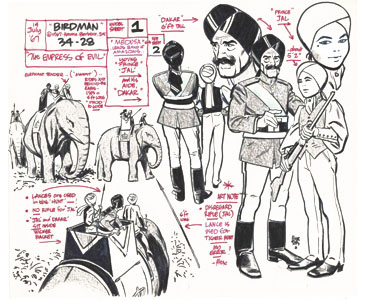One of the many annoying things that tech journalist are prone to do is to start out with a somewhat overexcited but generally reasonable account the new innovation then suddenly jump to a speculation that is technically impractical and in some cases theoretically almost impossible.
Case in point (from the Daily Mail but I've seen similar quotes elsewhere):
Greg Henderson, the creator of the Hendo Hoverboard, has created a working prototype of the device which works by using electromagnets to glide an inch off the floor.
The boards will currently only work over metal surfaces, so Mr Henderson is also designing the world's first hover park - similar to a conventional skate park but with an aluminium floor.
However he has also vowed to develop the technology so that it works over every surface, including water, allowing people to recreate the opening sequence of Back To The Future II where Marty uses a hoverboard to escape his pursuers by skating over a lake.
This is so bad I have to wonder if it's a misquote.
Hopefully I will get the physics right on this one (if this gets confusing Wikipedia has good write-ups of
Diamagnetism and
Eddy Currents), but the hoverboard demonstrated here represents a clever application of very well-established physics and engineering principles. Specifically, if you pass magnets over a conductor like copper they produce currents which in turn produces magnetic fields. The interaction between these fields can be used, among other things, to levitate the magnets over the conducting surface. This is one of the technologies that is used for maglev trains.
Historically, one of the problems with this technology is that the magnets have to be in motion relative to the conductor. Henderson appears to have gotten around this problem by
having the magnets rotate in the hover board so that the board can levitate while stationary. That is a clever piece of engineering and it has certainly produced a cool piece of technology. Furthermore, it is easy to imagine lots of potential applications ranging from recreation (skate parks) to manufacturing (moving loads across a factory floor).
What is difficult to imagine is how this could work "over every surface." It is true that all materials have
diamagnetic properties which means that a magnetic field can repel substances that we normally think of as non-magnetic, but the magnitudes are tiny compared to the effects you can get with the conductor and moving magnets arrangement mentioned above. It takes incredibly powerful magnetic fields to do this...
...far more powerful than anyone will manage with a skateboard in the near future.
All of which raises the question, why exaggerate? We see this all the time in the tech world. Developers come up with a fun, exciting, potentially useful innovation, then for no apparent reason, they feel compelled to make outlandish claims about cost and functionality. If I were building actual, honest-to-god levitating skateboards, I don't think I would feel the need to embellish the cool factor.








